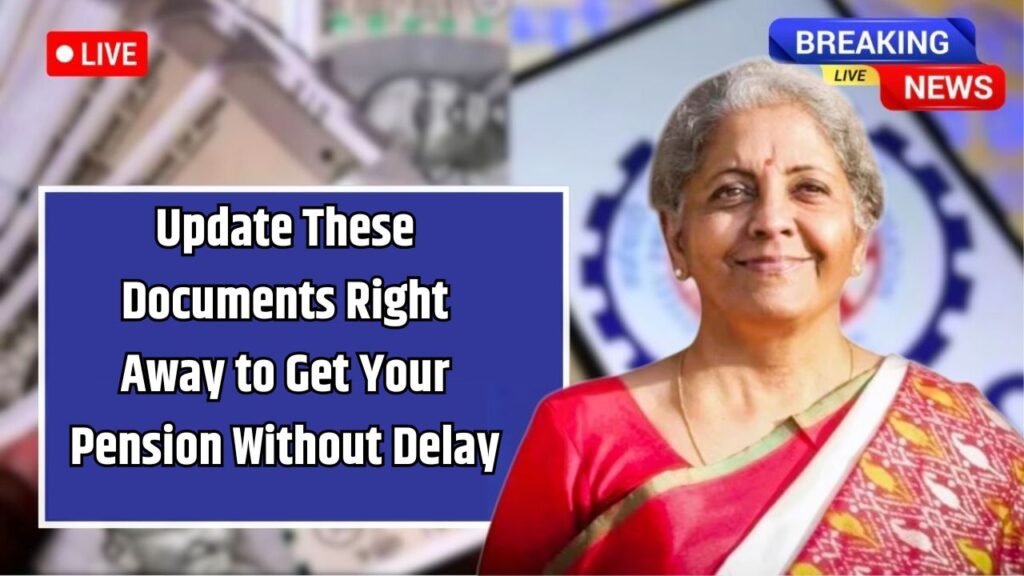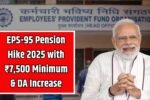For many senior citizens, their pension is the primary—and often only—stable source of income after retirement. Unfortunately, delays or interruptions in pension payments are common, and frequently stem from outdated or missing documentation. Mistakes or unawareness around renewing or linking important documents like bank details, Aadhaar, PAN, or the Digital Life Certificate (Jeevan Pramaan) can create financial hardship.
Here’s a more in-depth, up-to-date guide to what needs to be checked, how often, and practical tips to keep pension payments flowing smoothly.
Why the Digital Life Certificate (DLC / Jeevan Pramaan) Matters
- The Digital Life Certificate (Jeevan Pramaan) is a mandatory annual confirmation that the pensioner is alive and eligible to receive their pension.
- Until a few years ago, pensioners often had to visit a pension office, bank branch, or government office to submit this certificate in person. Today, the process can be done online via a mobile app or portal using Aadhaar-based authentication.
- If a pensioner fails to submit the DLC on time, their pension payments may be suspended, causing serious financial stress.
- Some states or pension schemes provide auto-reminder SMS or email alerts for renewal; it’s wise for pensioners (or their family) to monitor these and act promptly.
Pro tip: After submitting the DLC, always check and save the acknowledgement number. Better yet, confirm with your bank or pension office (via their portal or helpline) that your certificate was accepted.
Bank Account & Aadhaar Linking: Essentials for Pension Disbursement
| Item | Why It Matters | What You Should Do | Frequency / Timing |
|---|---|---|---|
| Bank account status | Pensions are credited directly; if the account is closed or frozen, payments will bounce back. | Check your account is operational, has correct IFSC/branch code, no restrictions. | At least once a year |
| Aadhaar ↔ bank account linkage | Many pension systems now require Aadhaar to be linked to the bank account to release funds. | Ensure Aadhaar is updated with correct name, address; link it with bank & pension records. | After any change or at annual review |
| Bank account change / switch | When changing accounts, if the pension authority is not informed, payments may go to the old account. | Submit the new account details (cancelled cheque, bank letter) to pension department. | Immediately after account change |
| Nodal / designated bank rules | Some pension schemes require disbursement via specific “nodal banks” or branches. | Confirm whether your pension is tied to such a bank; if you shift accounts, ensure it still belongs to the eligible banking network. | Upon account change or scheme change |
Other points:
- If the bank account is held jointly, make sure the pension authority recognizes the correct signatory.
- If your pension scheme disburses via Post Office savings accounts, make sure your post office account is active and linked properly.
Role of PAN Card, Tax Withholding & Other Documents
- In many pension schemes, the PAN (Permanent Account Number) must be linked to your pension records. If not, the pension authority may apply higher TDS (tax deduction at source) or even block payments until the linkage is established.
- If the pensioner falls under the exempt income bracket, they can submit Form 15H / 15G (for non-filers) to avoid TDS. Ensure that this form is filed in time with the pension disbursing authority or bank.
- Other documents to keep updated:
• Proof of identity (e.g. senior citizen ID, voter ID)
• Address proof (if you have shifted)
• Mobile number and email — so you don’t miss alerts or OTPs
• Emergency contact / alternate address
Failure to maintain accurate personal contact details may lead to important pension-linked notices not reaching you, delaying resolution.
Suggested Annual Checklist & Timeline
- January–March
- Confirm DLC renewal schedule; submit Jeevan Pramaan for the year
- Review bank statement and account health - April–June
- Re-verify Aadhaar ↔ bank account linkage; check for any “unlinking” errors
- Check PAN linkage and tax form (15H/15G) status - July–September
- Update address proof, contact no., especially if you moved
- Confirm with pension authority for any scheme-specific requirements - October–December
- Recheck all documentation ahead of year end
- Respond immediately to any notices from pension department or government
Make it a habit: once every quarter, give a quick scan of your accounts and communication from pension authorities.
What to Do If Pension Gets Stopped
If your pension is delayed or halted despite all precautions:
- Immediately contact the pension disbursing authority or department, quoting your pension ID or certificate number
- Provide all updated documents as requested
- Use the SMS/portal tracking system (if available) to see the status
- Escalate to a higher officer (regional or state level) if no response within a stipulated timeline
- Keep records of your communications (emails, letters, acknowledgement slips)
- In some states, there are grievance redressal mechanisms or ombudsman services for pension delays
Why This Matters — Real Impact
- Even a one- or two-month disruption in pension can destabilize daily life for many elderly people who rely exclusively on it for medicines, food, and bills.
- Pension delays often spike when governments or pension schemes shift to new disbursement systems or digitize services — many seniors are caught unprepared.
- In recent years, various state governments in India have issued circulars to pension authorities mandating regular checks on Aadhaar, DLC issuance, and bank linkages to reduce delay complaints.
Final Thoughts
Pension is the lifeline for many senior citizens. Ensuring regular upkeep and verification of essential documents like the Digital Life Certificate, Aadhaar-bank linkage, PAN, and contact information can prevent avoidable disruptions. Adopting a routine schedule, staying alert to government notifications, and acting promptly on discrepancies can save older individuals from undue stress and financial hardship.
Disclaimer
This article is for general informational purposes only. For scheme-specific rules, timelines, or legal advice, pensioners should contact the relevant pension disbursing authority or certified financial advisor.





